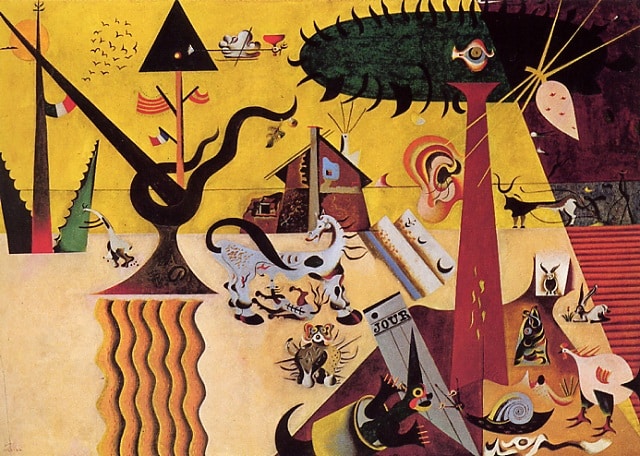Tag Archives: effect of art on brain
The Surrealistic Art of Transcendence: Why Does Abstract Art Comfort Us?

“Color is the keyboard, the eyes are the harmonies, the soul is the piano with many strings. The artist is the hand that plays, touching one key or another, to cause vibrations in the soul.” – Wassily Kandinsky
People tend to think of their taste in art as being basically static; if one is a strict devotee of realism, one is not likely to wake up one day and find one’s self enamoured of the bright swirls of a Kandinsky painting, for example, or the nonsensical landscapes of Dali.
This is, however, as erroneous as the common belief that our basic personality traits are inherent and immutable; emerging research shows that we can, in fact, profoundly change our minds where art is concerned—but it usually takes some trying circumstances to bring about this alteration. According to recent studies, we are more likely to relate to surrealistic art if we have recently been forced to confront our mortality.
While the idea of finding comfort in art (and the feelings of transcendence it provides) in the presence of existential threats is nothing new—sacred artworks have been crafted since the dawn of civilization to provoke such sensations—this new research is demonstrating that the same benefits may be garnered from purely secular works as well. Surrealistic art in particular appears to be highly effective for this purpose.
A group of researchers led by psychologist Verena Graupmann of DePaul University, which has extensively investigated the aforementioned phenomenon, explains that the unsettling nature of such works is, strangely, what creates the comforting feeling of transcendence. Through gazing upon such works, people may move their thinking away from long-held fears and limitations, and create in place of these fears a more far-reaching sense of meaning. This process results in the viewer entering a dream-like state not dissimilar to their unconscious stream of thoughts; it is the entry into this state which results in the sensation of meaning.
The DePaul University team is far from being alone in their findings; in the European Journal of Social Psychology, Graupmann and her colleagues provided recounts of two experiments that confirmed the impact of surrealistic art on those seeking meaning.
One experiment featured 87 undergraduates at a major German university; half were instructed to describe their feelings as they contemplated their own deaths, and also to write down what they believed would happen to them during the process of dying. The other half were asked similar questions, but about entirely different subject matter (dental pain).